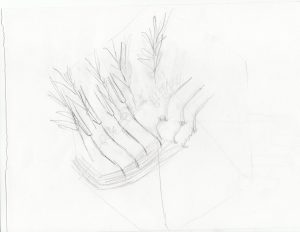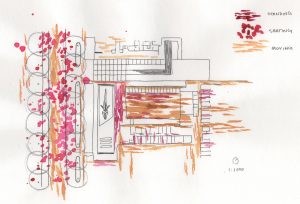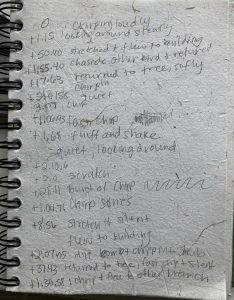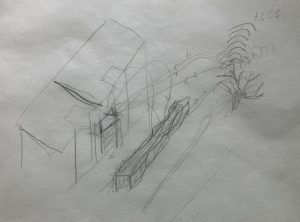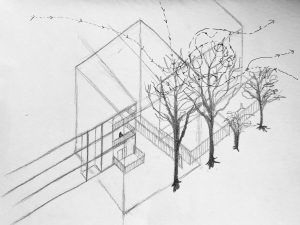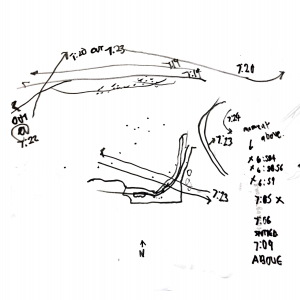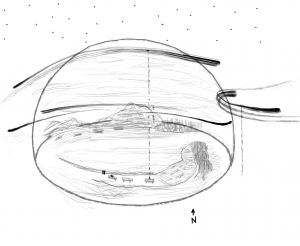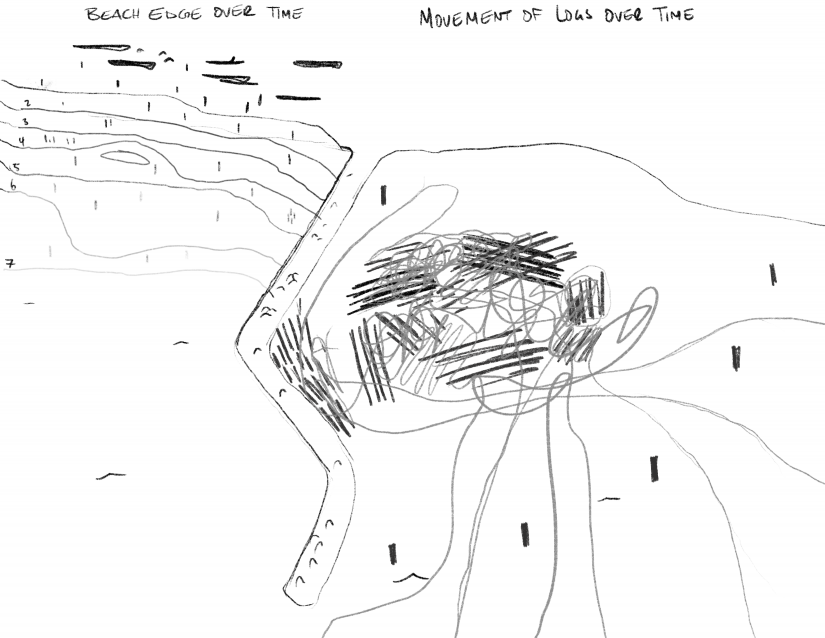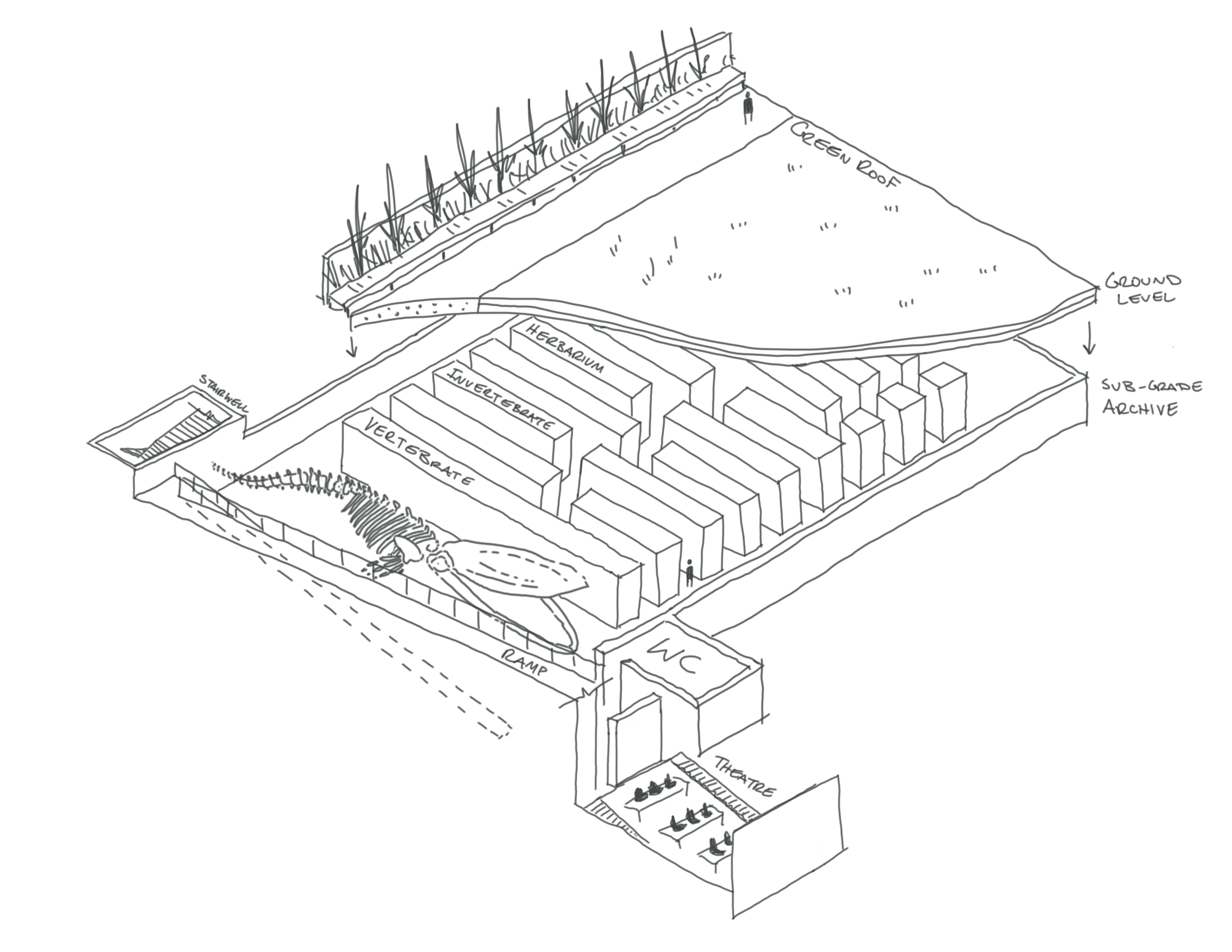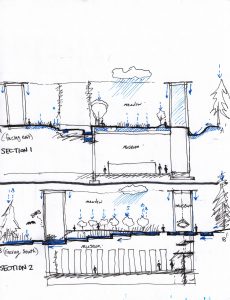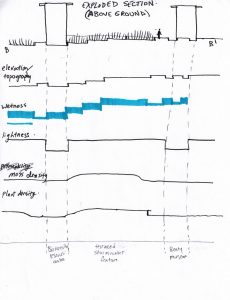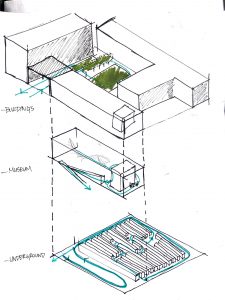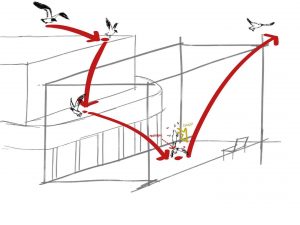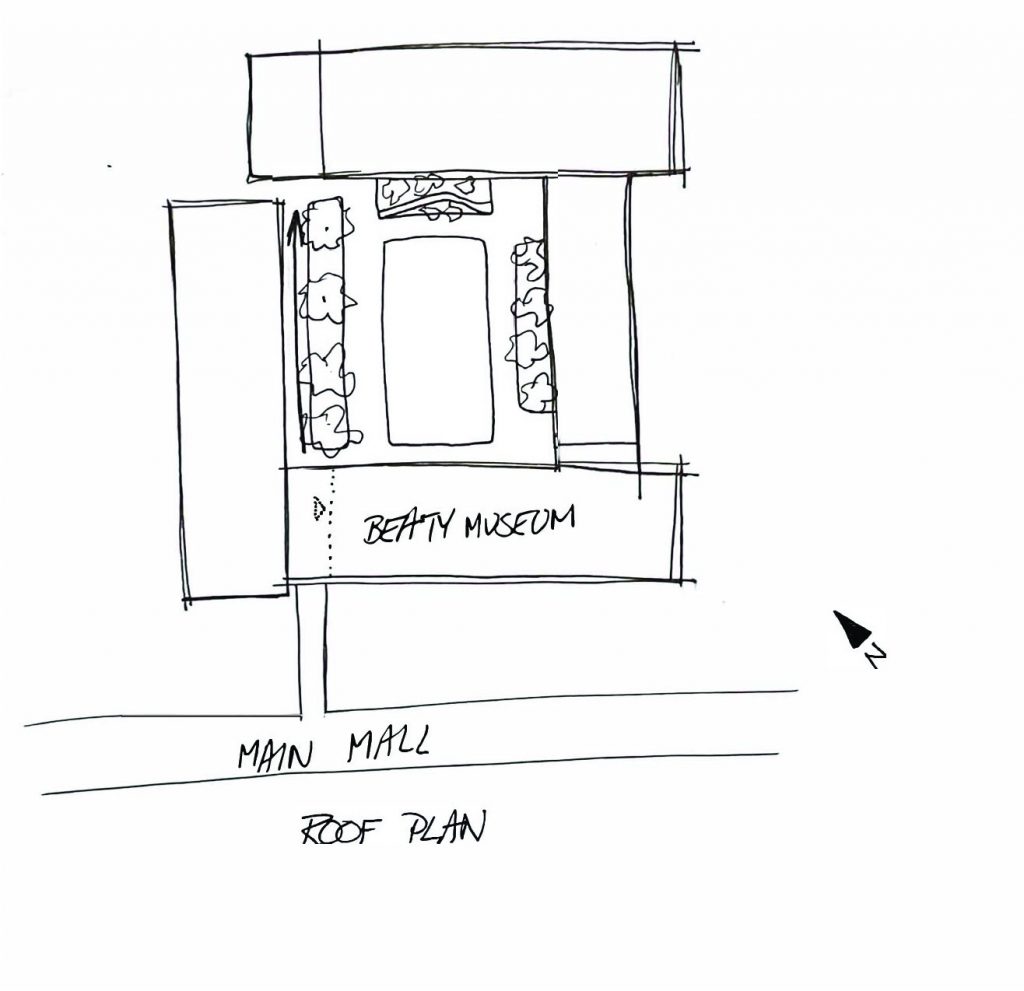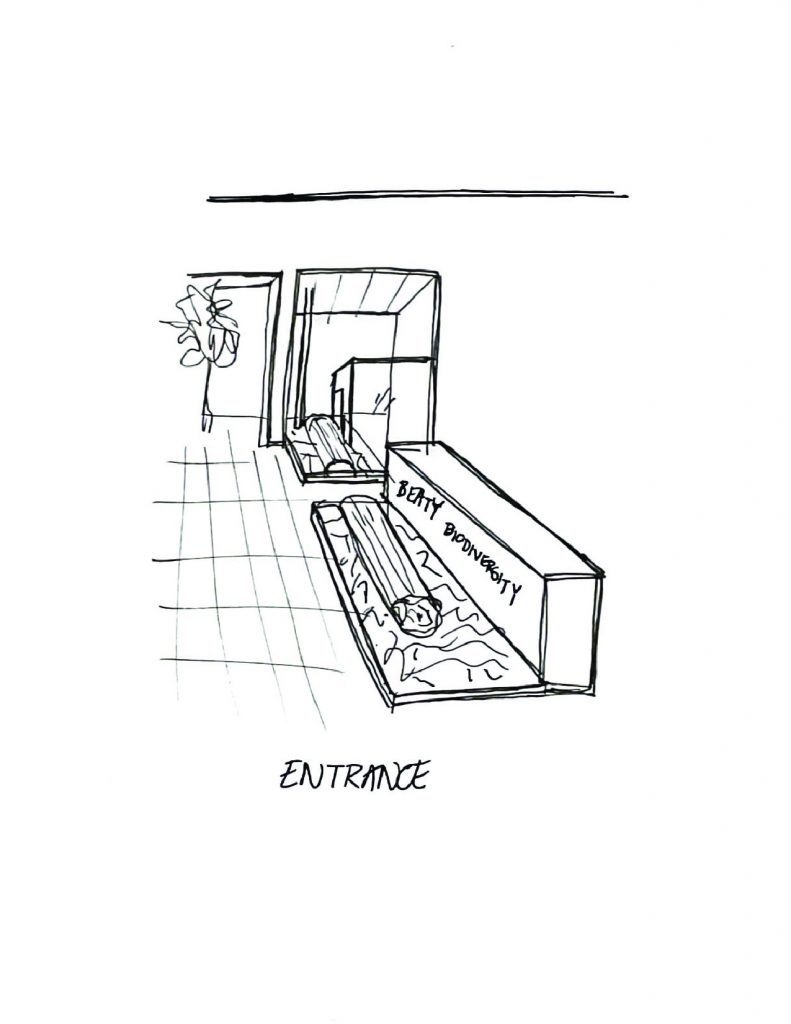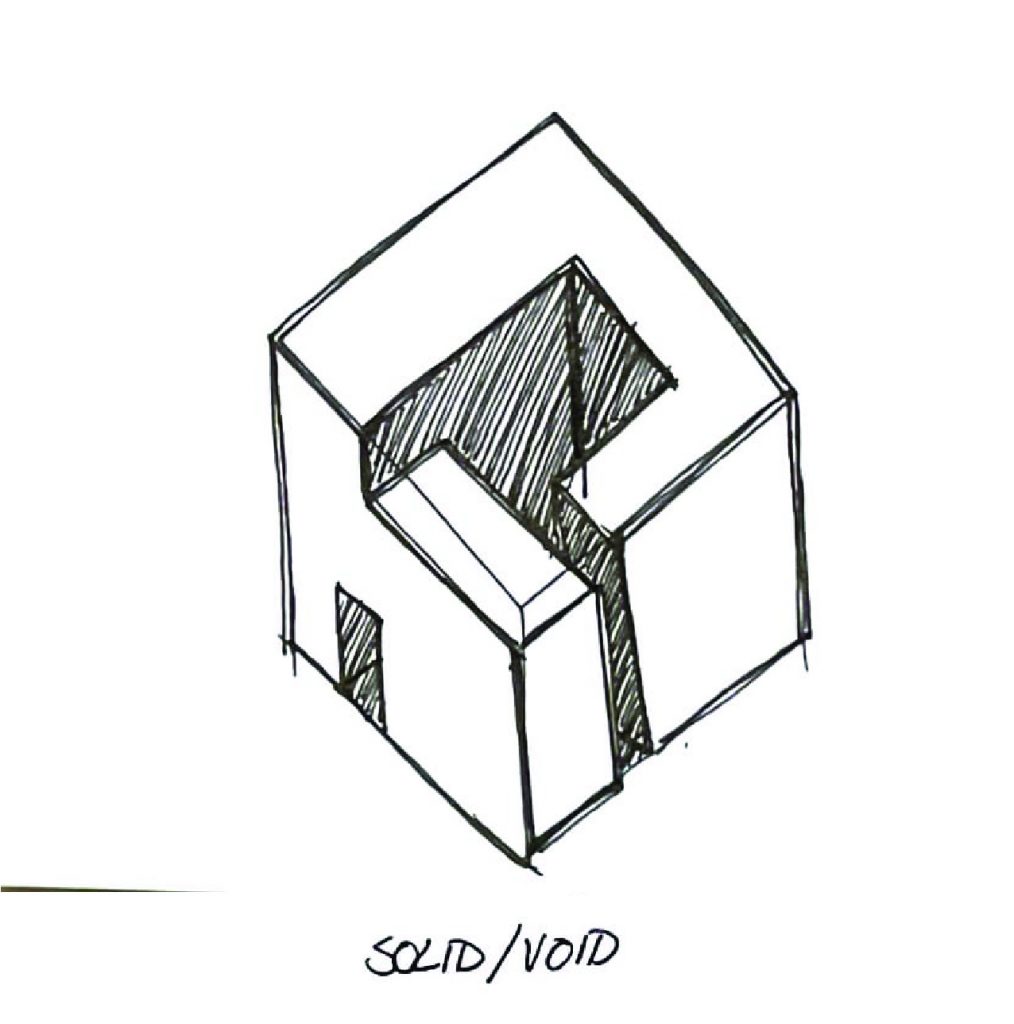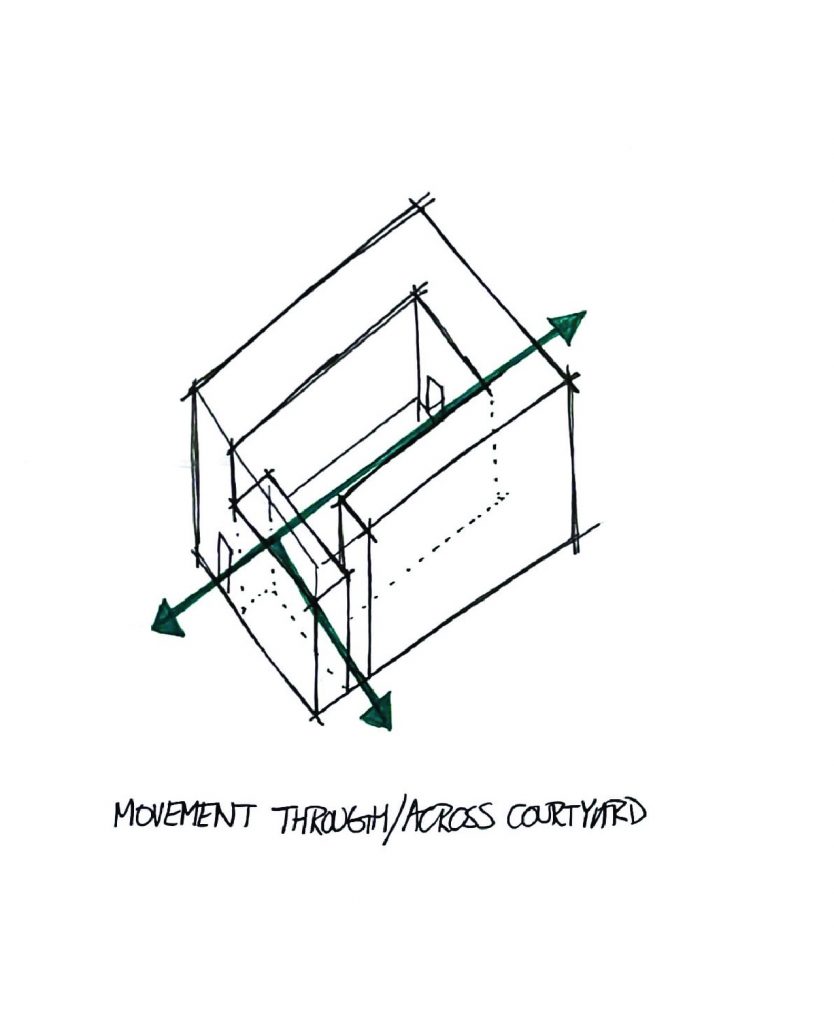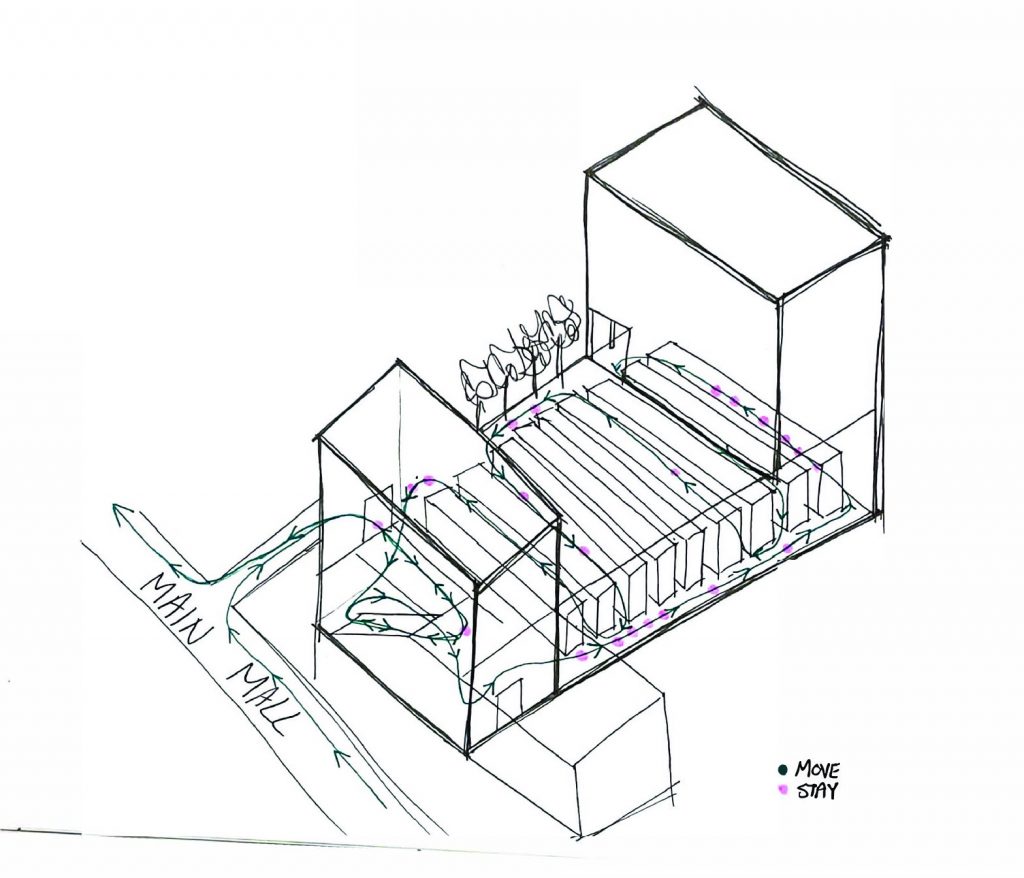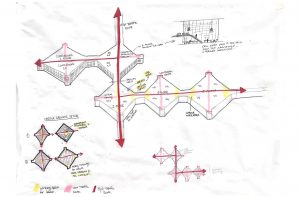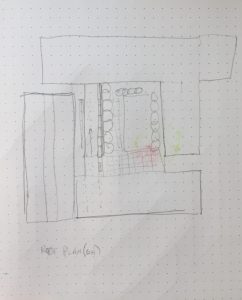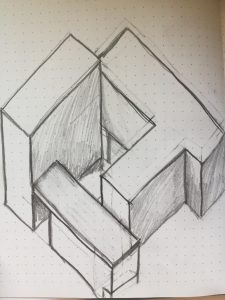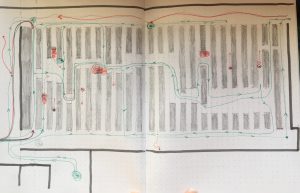At home exercise, the Beaty Biodiversity Museum

The museum was not busy when I went there, so I wasn’t able to track movement of people visually. What I did find was the experience of hearing other people as they came near me and then move further away. Because the rows of exhibits make it hard to see beyond your row it amplifies this feeling of hearing people around you. The blue arrows track my movement through the space, and the colours track different noise moments I experienced during my visit.
Below I was looking at circulation through the whole space. It was my first visit and I was surprised to come down the ramp, leaving the airy top floor and find myself in this cramped basement full of narrow rows of tall looming cases.

In-class exercise diagramming rain.

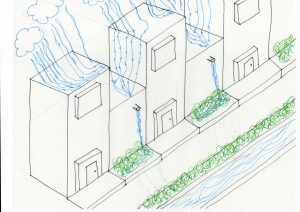
- My final attempt at drawing rain water flow from the roof of these townhomes near my house.
- I redrew this version based on feedback in class trying to make it more clear, and link the falling rainwater with the collection channel.

My first attempt at drawing water flow. This is a water feature near my house and part of rainwater collection system. I realised it isn’t very diagrammatic so I moved on to trying to draw the flow of rainwater.
Below is my first attempt at drawing rain more diagrammatically, and I did not like it at all, so I tried again on some building across from this one (see above.)
